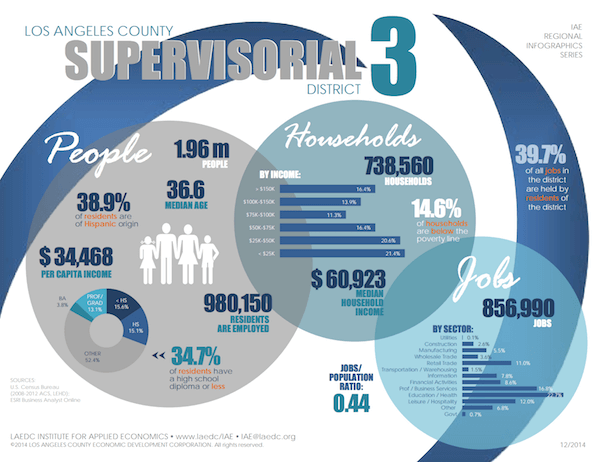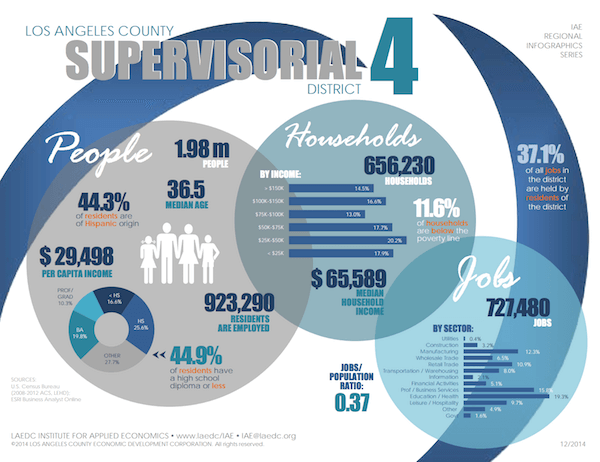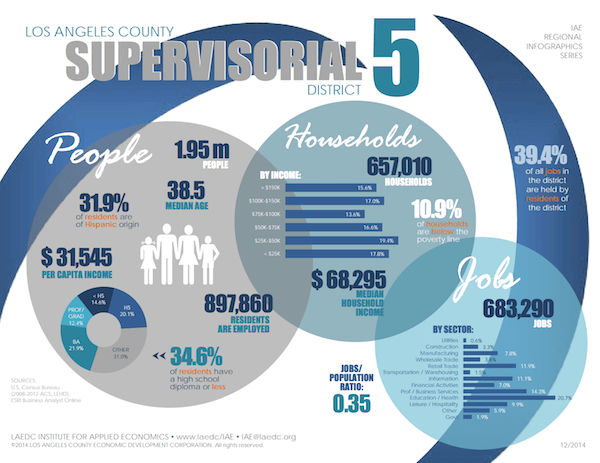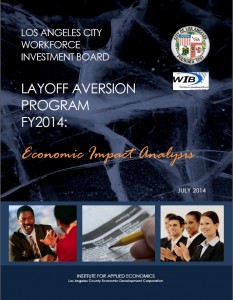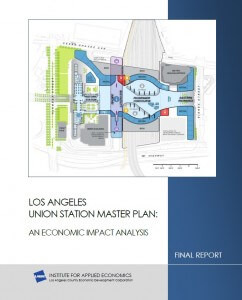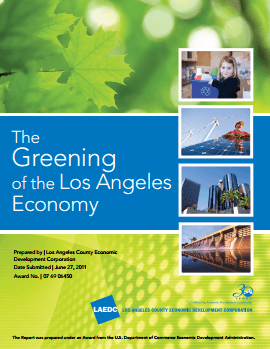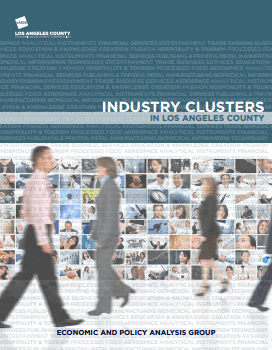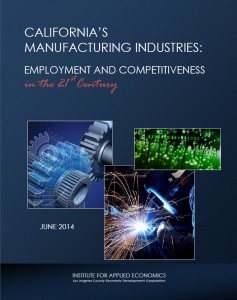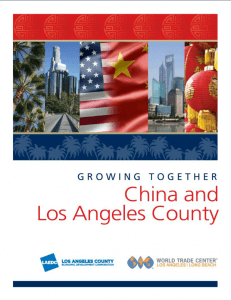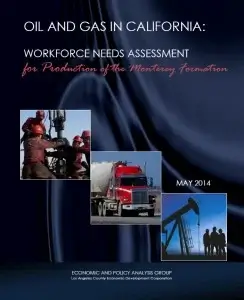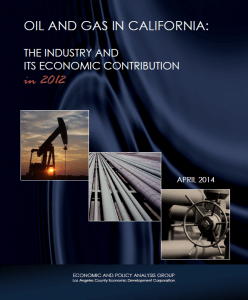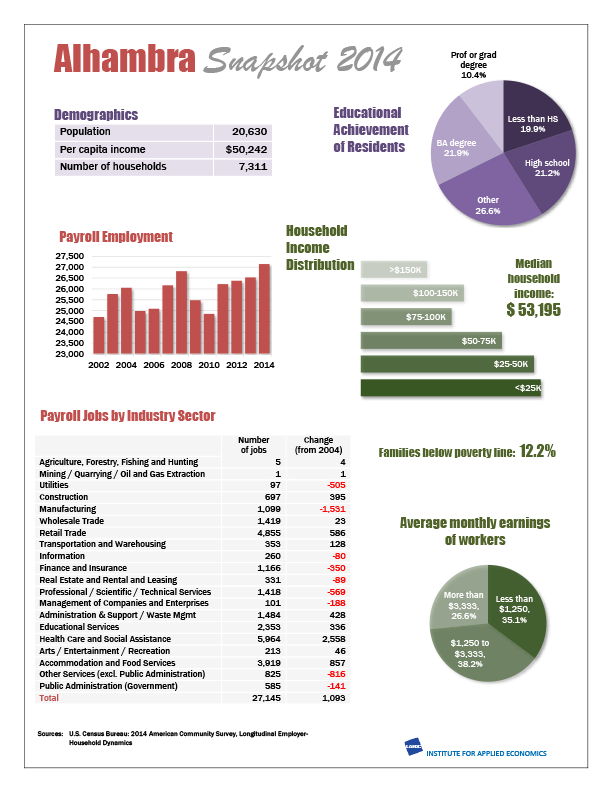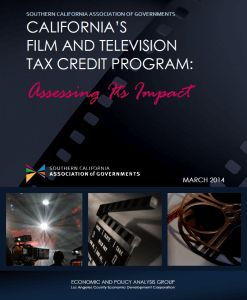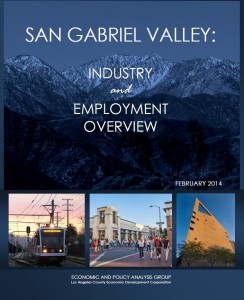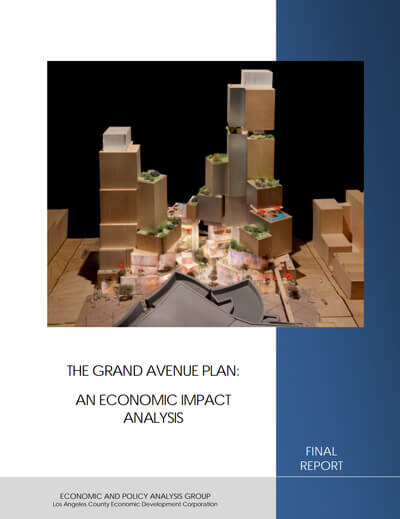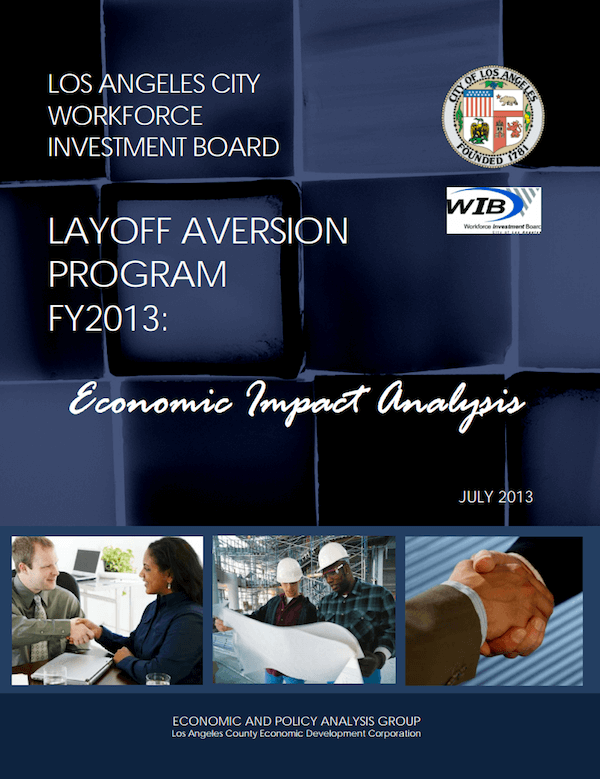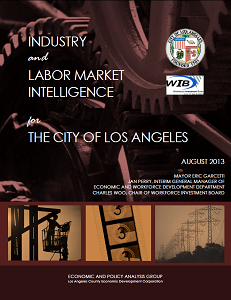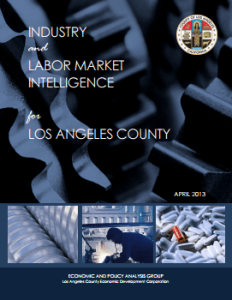Economic Reports
Search Reports
Recent Reports
High Tech in LA: Its Employment and Economic Contribution in 2013
The LAEDC Institute for Applied Economics has published High Tech in LA, our first report to examine the high tech economy in Los Angeles. The report quantifies employment and payroll earnings … Continued
Los Angeles City Workforce Investment Board: Layoff Aversion Program FY 2014
This report provides analysis of jobs saved and ROI of the Layoff Aversion work performed by LAEDC for the City of Los Angeles Workforce Investment Board (WIB), for the Fiscal Year 2014. It … Continued
Union Station Master Plan: An Economic Impact Analysis
The Institute for Applied Economics at LAEDC has published the following report, detailing the economic impact of the Union Station Master Plan in downtown Los Angeles.
Greening of the Los Angeles Economy
The Greening of the Los Angeles County Economy report, commissioned in 2008 by the U.S. Economic Development Administration and conducted by the LAEDC, examines the Los Angeles region’s $500 billion economy with the goal of evaluating the challenges and opportunities that arise from greening the economy. The focus on Los Angeles County includes an analysis of the region’s overall greening potential to determine those areas where job creation is most promising and where a leadership position by the county business community is immediately visible.
Aimed at recommendations to protect the environment while preserving or improving the economy, the report identifies the potential for Los Angeles-based firms to serve the domestic market for green products and services and examines the possibility of creating new green-oriented industries. The report’s recommendations are categorized into three key areas: green businesses and green jobs, business assistance, and the regulatory environment.
Industry Clusters in Los Angeles County 2010
By all measures, Los Angeles County is large. It is the most populous county in the nation, with 10 million residents in a land area of over 4,000 square miles. It is home to a diverse and dynamic workforce of almost 4 million, producing a gross regional product estimated to be $544 billion—larger than Switzerland, Saudi Arabia or Taiwan.
As the second decade of the 21st Century unfolds, we face challenges in preparing an educated and skilled workforce that is able to compete in the global marketplace, in allocating sufficient resources to maintain or deliver critically-needed infrastructure projects under strained budgets, in fostering a climate of technological innovation and product development, and in pursuing sustainable growth in the face of economic realities.
To sharpen our knowledge and better focus and tailor our policy and economic development efforts, we look towards new research in how industries compete, succeed and prosper, and new methods that will allow comparison of our performance against that of other regions.
Professor Michael E. Porter’s enduring work on the competitiveness of businesses and more recently of
regions brings into focus how economic prosperity can be driven. Through ground-breaking work done at the
Institute for Strategy and Competitiveness at Harvard Business School, and supported by the Economic
Development Administration of the U.S. Department of Commerce, Professor Porter’s Cluster Mapping Project has defined industry clusters based on locational correlation of employment.
Manufacturing in California: Employment and Competitiveness 2014
The LAEDC’s Institute for Applied Economics has completed research on the California and Los Angeles regional manufacturing sector, commissioned by CMTC (California Manufacturing Technology Consulting). In spite of a long-term … Continued
Growing Together: China and Los Angeles County (2014)
LAEDC has released its new report, Growing Together: China and LA County At the International Trade Outlook event on June 5th, 2014, the LAEDC released its new report detailing trade, … Continued
Oil and Gas in California: Workforce Needs Assessment
The Institute for Applied Economics at LAEDC has published this research report, entitled Oil and Gas in California: Workforce Needs Assessment
Oil and Gas in California: The Industry and Its Economic Contribution in 2012
The Western States Petroleum Association (WSPA) commissioned the Los Angeles County Economic Development Corporation (LAEDC) to study the economic contribution of the oil and gas industry in California for the year of 2012. This report, published in April 2014, is one of the many objective, custom economic reports that are produced by LAEDC’s Economic and Policy Analysis team. The report describes the economic impact of oil and gas industry operations in their entirely for the state of California, and estimates that the industry generated more than $220 billion in direct economic activity, contributing 5.4 percent of the state’s GDP, and supported 468,000 jobs in 2012, or 2.3 percent of California’s employment. Additionally, the petroleum industry generated $21.6 billion in state and local tax revenues and $14.7 billion in sales and excise taxes.
California Film and Television Tax Credit Program: An Economic Impact Study (2014)
Southern California Association of Governments (SCAG) releases analysis of California’s Film and Television Tax Credit Program.
The Southern California Association of Governments (SCAG) released a study, which was conducted by the LAEDC’s Economic & Policy Analysis Group, assessing the impact of California’s Film and Television Tax Credit Program. The study reviews 109 film and television projects that have been allocated credits and completed production (to date) in the first three fiscal years of the program; it assesses the impact of the first three years of allocated funding of California’s Film and Television Tax Credit Program; and it evaluates several alternatives to the current program.
Highlighted economic and fiscal impacts of the California Film and Television Tax Credit Program, described in further detail in the study include:
- For each $1 of tax credit certificate issued, total economic activity in the state increased by $19.12
- For each $1 of tax credit certificate issued, labor income increased by $7.15
- For each $1 of tax credit certificate issued, total Gross State Product increased by $9.48
- For each $1 of tax credit certificate issued, $1.11 was returned to local and state governments
San Gabriel Valley: Industry and Employment Overview
LAEDC’s Institute of Applied Economics published this report on San Gabriel Valley industry employment and competitiveness in February of 2014. (The Institute was previously LAEDC’s Economic and Policy Analysis Group)
The Path Forward: Economic and Workforce Intelligence for Northeast Los Angeles
The LAEDC’s Economic and Policy Analysis Group just released a report titled The Path Forward: Economic and Workforce Intelligence for Northeast Los Angeles. This report studies the composition of the existing industry and the residential population, the juxtaposition of residential and industrial areas surrounding the Los Angeles River in the communities of Atwater Village, Cypress Park, Elysian Valley, Glassell Park and Lincoln Park within the study area, and to identify target industries for business and workforce development. This analysis will be used to build a comprehensive community economic development strategy for the Northeast Los Angeles district and to aid outreach efforts in the implementation of these efforts.
Industry and Labor Market Intelligence for the City of Los Angeles
In order to develop an informed strategy for the focus and delivery of its services, the City of Los Angeles Workforce Investment Board (WIB) commissioned the Economic and Policy Analysis Group (EPAG) of the Los Angeles Economic Development Corporation (LAEDC) to produce a report titled Industry and Labor Market Intelligence for the City of Los Angeles, gathering labor market and industry intelligence in support of the WIB’s strategic planning efforts.
This study examines the demographic and economic characteristics of the City of Los Angeles, and is presented in three parts: Demographic Overview, Labor Market Analysis, and Occupational Analysis.
Download a copy of the full report here.
Detailed tables on industry employment and occupations (citywide) can be downloaded here.
Profiles for individual City Council Districts can be downloaded here.
Profiles for individual planning areas can be downloaded here.
Land use profiles by Council Districts can be downloaded here.
Los Angeles City Workforce Investment Board: Layoff Aversion Program FY 2013
The LAEDC just released its FY 2013 Economic Impact Analysis of its Layoff Aversion Program. A Layoff Aversion Program for the Los Angeles City Workforce Investment Board (WIB) has been implemented … Continued
Industry Clusters of Southern California in 2011
The six counties of Southern California including Los Angeles, Orange, San Bernardino, Riverside, Ventura and Imperial encompass 191 cities and more than 18 million residents in an area of more than 38,000 square
miles. This large geographic area is home to a wide breadth of industry and economic activity.
LA City Council Profiles
The LAEDC’s Economic and Policy Analysis Group has released a series of Los Angeles City Council profiles detailing educational attainment, poverty, occupational employment, and industry sectors for each council district. This report is part of the Industry and Market Intelligence for the City of Los Angeles report.
Industry and Labor Market Intelligence for Los Angeles County
This study examines the demographic and economic characteristics of Los Angeles County, providing a labor market analysis, which examines the regional supply and demand for labor and identifies target industries, along with an occupational analysis that covers the current occupational makeup of the region and occupational projections for the next five years, and is presented in three parts:
- Demographic Overview
- Labor Market Analysis
- Occupational Analysis





